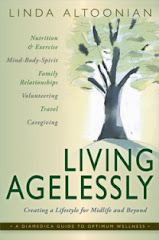Dear Linda
The older I get the darker my teeth have become. I'm trying to
decide between tray bleaching at home or an in-office procedure. What do
you suggest?
Getting Gray
Dear Getting Gray:
Teeth darken for a variety of reasons. The good news is that
those discolored from aging are most responsive to whitening, but it's
important to see a dentist for an examination that includes radiographs
and to determine any contraindications like severe tooth sensitivity.
According to Dr. Susan Hollar of Arlington, “the use of
custom-fitted trays is the safest and most cost efficient method for
whitening teeth. That process provides the best ultimate result with the
longest duration.”
The technique consists of bleach with 10% carbamide peroxide
(approved by the American Dental Association), an application prosthesis
made of a thin, clear, soft material, and a treatment regime.
The regime consists of wearing the loaded prosthesis at night or
in 2-4-hour intervals during the day, if sleep is disrupted. Treatment
time for normal teeth can be 1-6 weeks, 1-3 months for nicotine-stained
teeth, and 2-6 months or longer for tetracycline-stained teeth.
Because of the desire for faster whitening systems, in-office
procedures that combine lasers or a light with an infra-red filter and
higher concentrations of hydrogen peroxide have become popular.
The disadvantage of power bleaching is that it's expensive
($400-800 per visit), usually requires three visits to be successful,
and is uncomfortable. The lips are pulled back to expose the teeth and a
rubber dam is put in place to protect the gums during the hour-long
procedure.
Another drawback is that lights and lasers dry out the teeth.
Temporarily, this result gives the illusion of whiter teeth, but after a
day or so of hydration, teeth may revert back to their original color.
In either process, time required for whitening varies from one patient to another and expectations must be realistic.
Saturday, June 1, 2013
Subscribe to:
Post Comments (Atom)


No comments:
Post a Comment